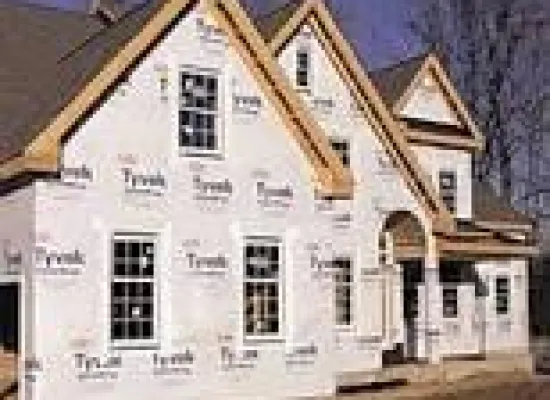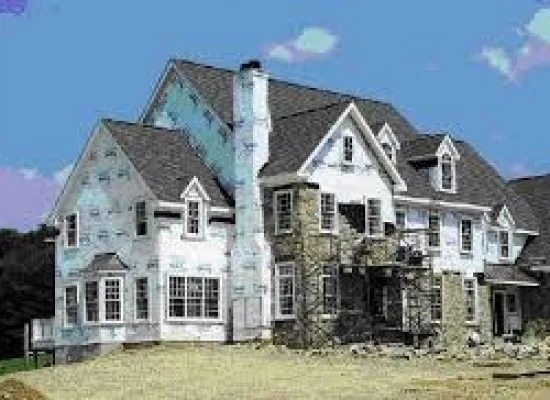Roof It Forward Case Study: The Purpose of Housewrap
The Challenge


The Solution
DuPont™ Tyvek® HomeWrap® is the original house wrap, incorporating unique material science that helps keep air and water out, while letting water vapor escape.
As a result, it can contribute to improved building durability by helping to protect homes against damaging wind and rain that can penetrate the exterior cladding.
Tyvek® HomeWrap® can also reduce home energy bills by controlling air flow and water intrusion, which helps insulation work better, allowing the HVAC system to work more efficiently. It's a house wrap engineered to keep homes cool in the summer, warm in the winter, and dry all year round.
How It Works
The unique nonwoven structure of Tyvek® HomeWrap® makes it breathable, allowing moisture vapor to pass through. This helps promote drying in wall systems, to help prevent mold and water damage. In addition, Tyvek® HomeWrap® stops air movement through the walls, helping insulation perform closer to its full R-value, to provide a more energy-efficient home.
Not All House Wraps Are Equal
The superior performance of Tyvek® HomeWrap® is what separates it from other types of house wraps, as shown below.
Perforated Wraps
Perforated house wraps require "micro-perforations," or thousands of holes, to allow the product to breathe. While this can help keep moisture from getting trapped inside walls, it also gives water and air a way in. Perforated wraps give up a great deal of resistance to air and water penetration in order to achieve some level of vapor permeability. Water and air infiltration can lead to the potential for water damage and make insulation less effective, leading to higher energy costs.
Low Perm Microporous Film Wraps
A low perm, microporous film wrap is manufactured in a two-part process, where a coarse fabric backing with no protection for a building is laminated with a fragile film, in order to pass minimum requirements for water and air resistance. The film layer is delicate and routinely compromised in the real world through tearing and abrasion. These products can perform well in controlled conditions, but they are a problematic choice for real world workers and job sites.